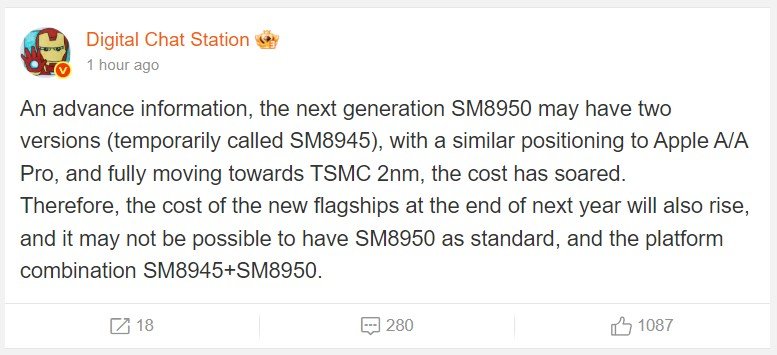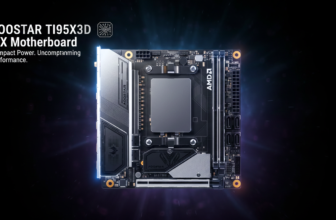In 2026, several major chipset manufacturers are expected to introduce their first commercial 2nm SoCs. Qualcomm is likely to lead the pack with its upcoming Snapdragon 8 Elite Gen 3, the successor to the current Snapdragon 8 series. However, a recent report suggests that the high cost of producing chips on the 2nm process may force Qualcomm to adopt a two-tier strategy, offering two different variants of the flagship SoC.
According to information shared by the leaker Digital Chat Station on Weibo, Qualcomm, Apple, and MediaTek are all facing increased production costs due to TSMC’s 2nm wafer pricing. The Taiwanese foundry reportedly started accepting 2nm chip orders from April 1, 2025, with each wafer estimated to cost around $30,000. This price hike is already creating complications for phone makers planning to use the upcoming SoCs.

To address this challenge, Qualcomm is believed to be working on two versions of the Snapdragon 8 Elite Gen 3. The higher-end variant, expected to carry the model number SM8950, will likely be aimed at flagship smartphones with no compromises in performance or features. Meanwhile, a second version, known internally as SM8945, may offer a slightly reduced feature set. This second chip could feature lower CPU and GPU clock speeds, a smaller cache, and possibly other minor downgrades to bring down manufacturing costs.
This dual-chip approach appears similar to Apple’s reported strategy for its A18 and A18 Pro SoCs, where the base variant is designed for standard iPhone models while the Pro version powers the higher-end devices. Qualcomm’s move could help its OEM partners better manage costs while continuing to market devices under the flagship category.
TSMC remains Qualcomm’s sole foundry partner for its most advanced chips, but there have been signs that the company is considering a return to a dual-sourcing strategy. Samsung Foundry, despite previous challenges with yield rates and power efficiency, is reportedly working to improve its 2nm GAA (Gate-All-Around) process. The company is aiming to hit a 50% yield target by the end of the year, which could make it a more viable option for future orders.
There was also a recent rumor that Qualcomm had engaged in talks with Samsung to manufacture a custom Snapdragon 8 Elite Gen 2 for its Galaxy lineup. However, nothing official has been confirmed. If Samsung’s process improves as expected, it may open the door for Qualcomm to diversify its manufacturing and reduce dependency on a single foundry.
For many smartphone brands, especially those without their own in-house chip divisions, the cost of using a full-power Snapdragon 8 Elite Gen 3 may be difficult to justify. These companies might opt for the lower-tier SM8945 to control pricing while still offering devices with flagship-level branding. Whether this strategy will affect product positioning or consumer perception remains to be seen, but it highlights the growing pressure on chipmakers and OEMs to navigate rising production costs in the next generation of mobile devices.
Source: Digital Chat Station







